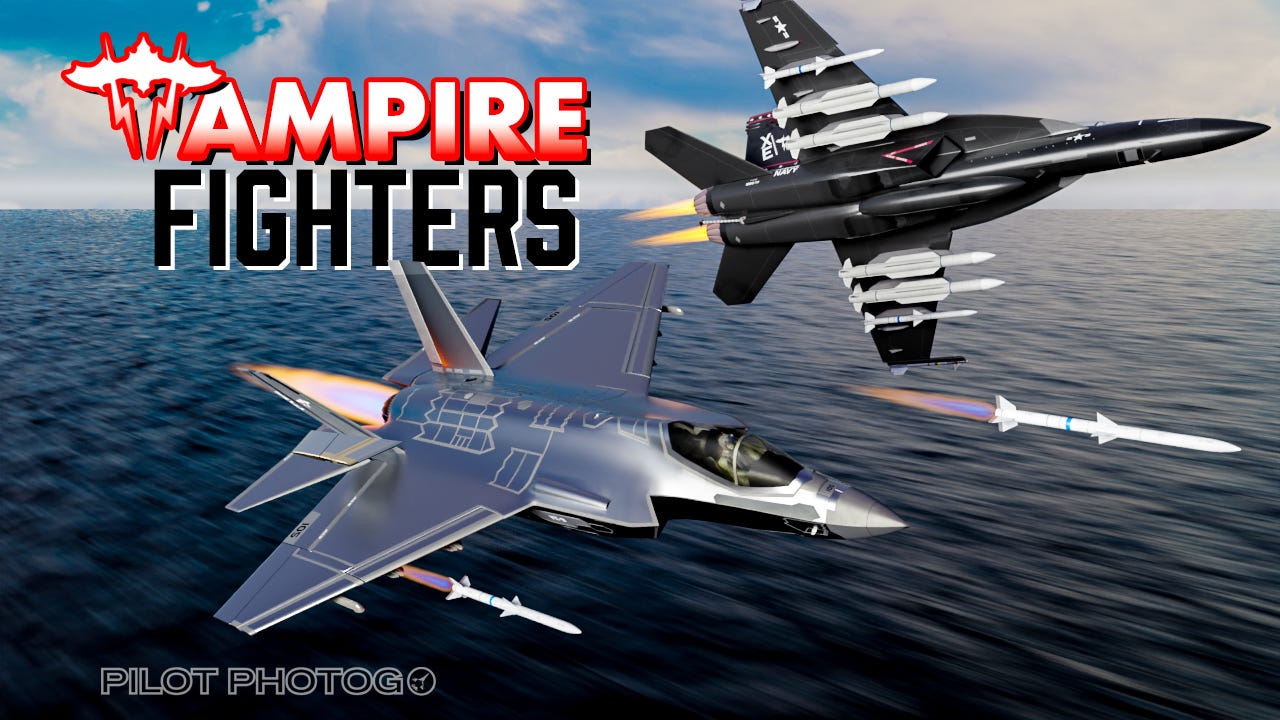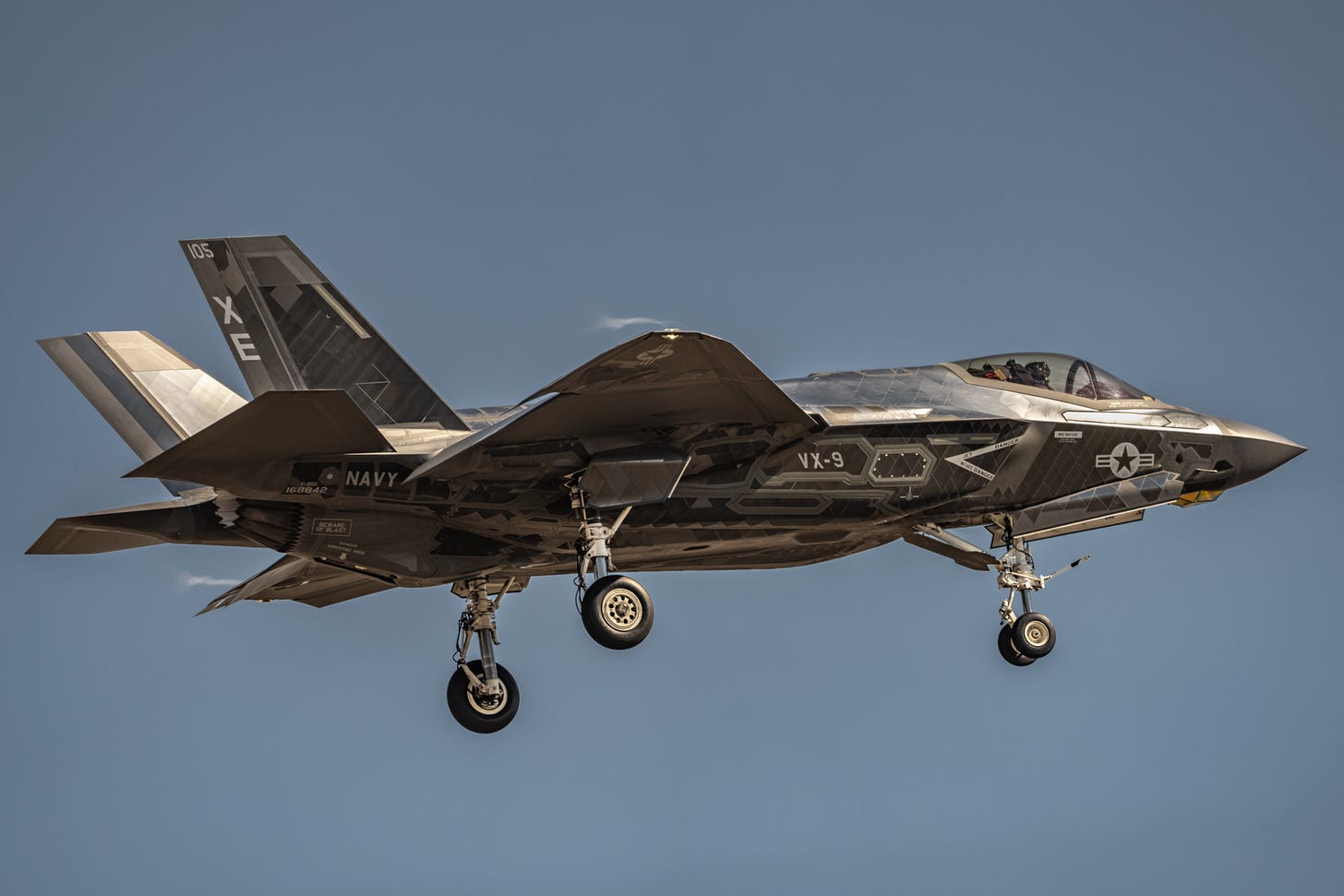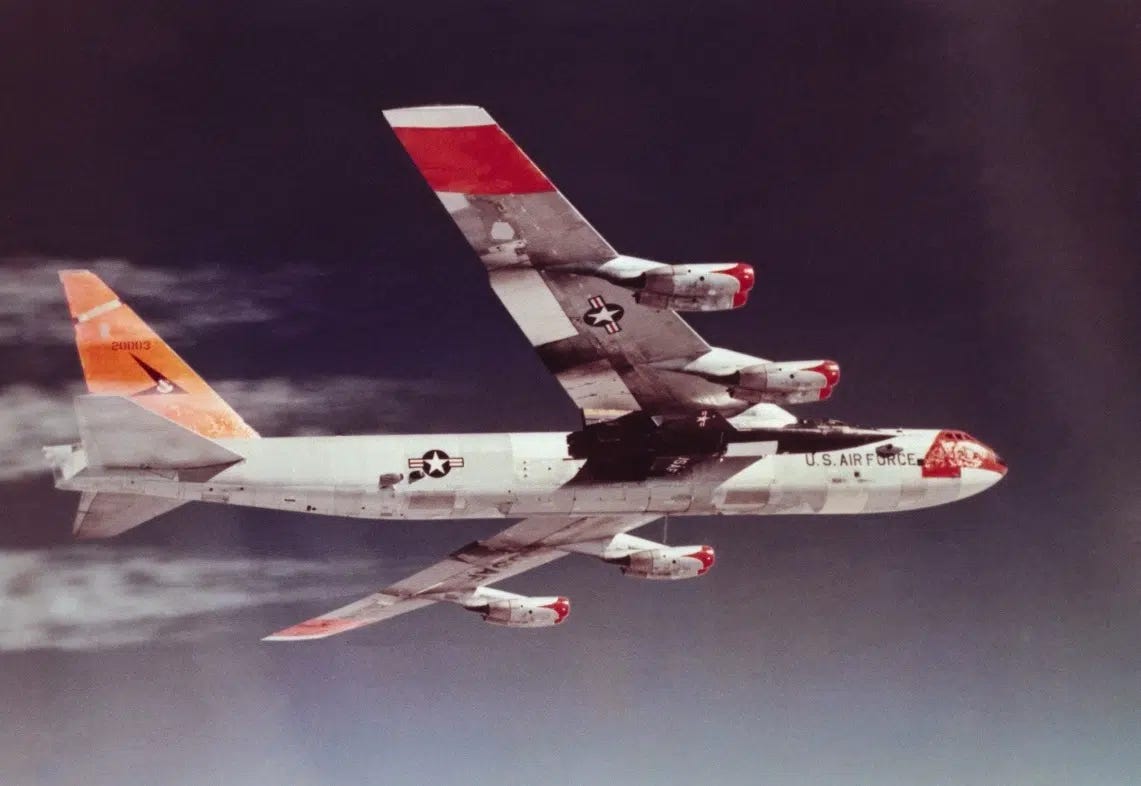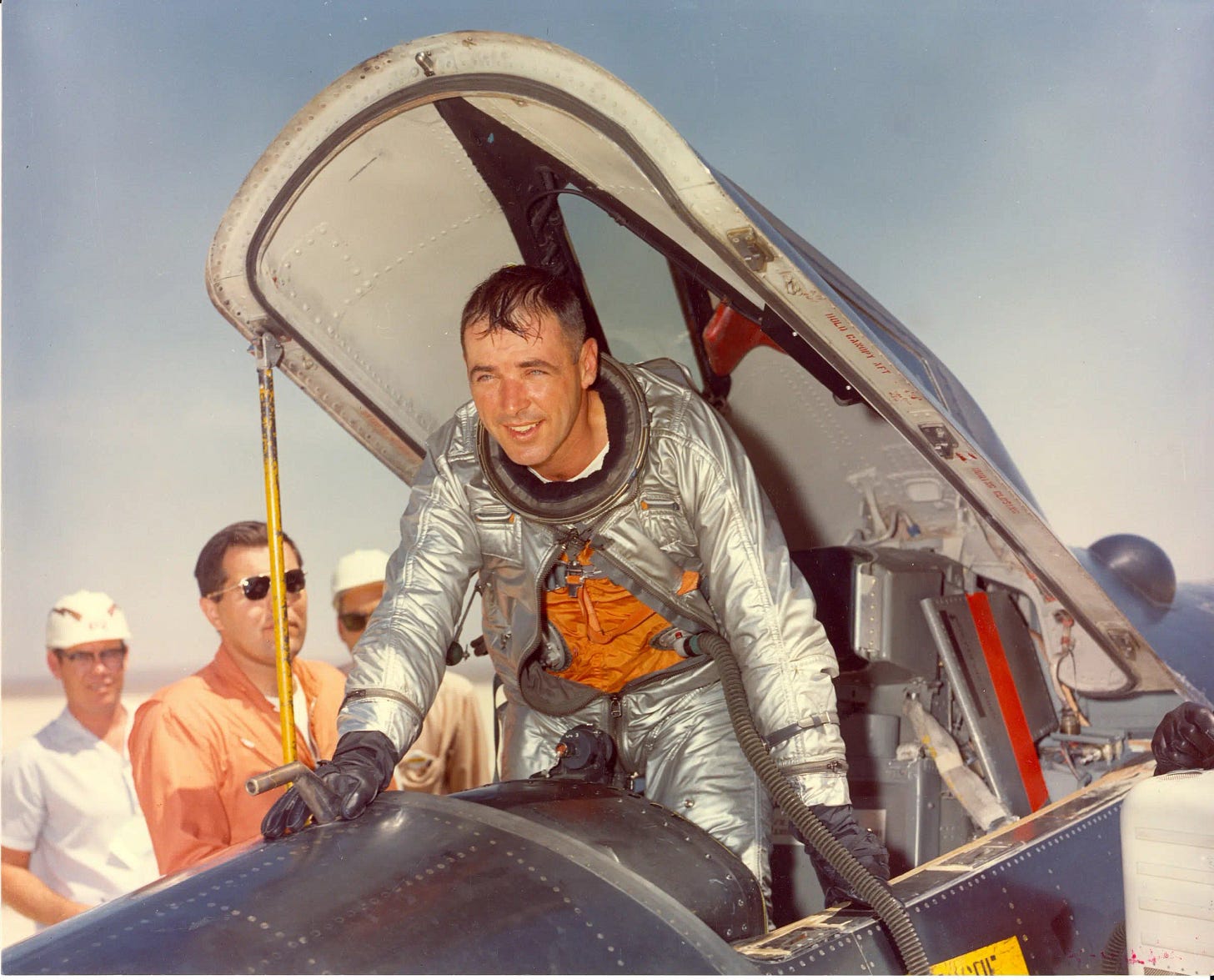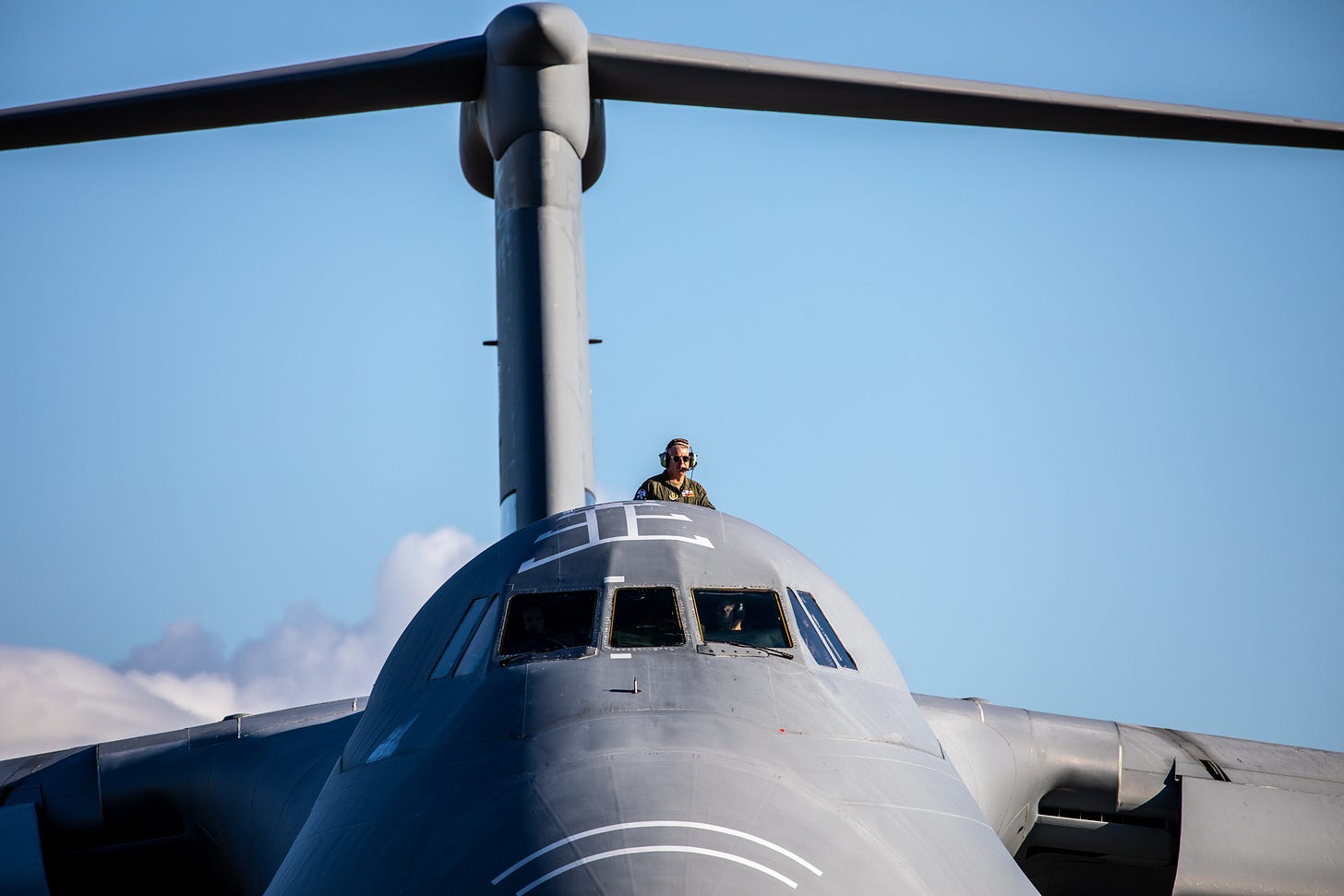Chrome Lightnings and Jet-Black Super Hornets
Tales of the VX-9 Vampires and looking back on the X-15 program
A true leader has the confidence to stand alone, the courage to make tough decisions, and the compassion to listen to the needs of others. He does not set out to be a leader, but becomes one by the equality of his actions and the integrity of his intent.
-Douglas MacArthur
Mission Briefing
Chrome Lightning and Black Hornets – Inside VX-9’s Secret Testing
Recently, something astonishing unfolded above the California desert near Naval Air Station China Lake—a chrome-coated F-35C Lightning II and a jet-black F/A-18F Super Hornet took flight in a mysterious dance. These were no ordinary flights; they belonged to VX-9, the legendary "Vampires," a secretive Navy test squadron renowned for pushing aviation technology to its limits.
The polished, mirror-like finish on the F-35 defies conventional stealth wisdom. Why would a stealth fighter intentionally reflect sunlight and radar signals? Speculation suggests it might be testing innovative countermeasures against increasingly sophisticated infrared and optical tracking systems. Could this radical chrome finish be hinting at technologies planned for America's future sixth-generation fighter, the F-47?
While futuristic projects captivate our imagination, immediate attention belongs to the F-35's Block 4 upgrades. Block 4 transforms the Lightning into an even more lethal fighter with advanced target recognition, increased internal missile capacity—from four to six AIM-120 AMRAAMs—and sophisticated electronic warfare (EW) enhancements. New Digital Radio Frequency Memory (DRFM) jamming allows the jet to mimic and manipulate enemy radar signals, significantly increasing survivability in contested airspace.
To accommodate these upgrades, the F-35 is undergoing Technology Refresh 3 (TR3), installing a new integrated core processor, enhanced panoramic cockpit displays, increased memory, and classified improvements.
But stealth and EW aren’t the only focus—VX-9 is also pioneering missile integration. Enter the legendary jet-black "Vandy 1," an F/A-18F Super Hornet now carrying the AIM-174B, an air-launched variant of the SM-6 missile, previously limited to naval vessels. This groundbreaking development dramatically extends fighter engagement ranges, redefining aerial combat tactics.
The history of VX-9 dates back decades, emerging from two Cold War-era squadrons: VX-4 "Evaluators," specialists in air-to-air combat, and VX-5 "Vampires," experts in air-to-ground warfare. Today, VX-9 embodies the spirit of both predecessors, rigorously testing cutting-edge tech to ensure unmatched Navy dominance.
The chrome F-35C and Vandy 1's missile testing aren't just experiments—they represent strategic leaps shaping the future of air combat. With VX-9 at the forefront, the U.S. Navy continues to redefine what's possible in military aviation.
Stay tuned—there’s undoubtedly more to come from these legendary Vampires.
This Week in Aviation History
Major Robert M. White and the X-15 Program
13 April 1960: Major Robert M. White, USAF, made history by becoming the first U.S. Air Force test pilot to fly the groundbreaking North American Aviation X-15, a pioneering hypersonic research aircraft. Lifted to altitude beneath the wing of a Boeing NB-52A Stratofortress (serial number 52-003), White piloted the first of three X-15s (tail number 56-6670) above Rosamond Dry Lake in California.
At precisely 09:15, the X-15 was released, and Major White ignited its two Reaction Motors XLR-11 rocket engines. Over a burn time of 4 minutes, 13.7 seconds, the aircraft accelerated rapidly, ultimately achieving Mach 1.9 (1,254 mph / 2,018 km/h) and climbing to an altitude of 48,000 feet (14,630 meters). Though impressive, these figures fell just shy of the planned targets of Mach 2.0 (1,320 mph / 2,124 km/h) and 50,000 feet (15,240 meters). White expertly brought the aircraft down for a landing at Edwards Air Force Base, touching down safely after 8 minutes and 52.7 seconds of flight.
The X-15 program proved pivotal in aviation and space exploration history. Over the course of its operational lifetime, the program conducted 199 missions from 1959 to 1968, greatly expanding human understanding of high-speed, high-altitude flight and providing invaluable data on aerodynamic heating, atmospheric re-entry, and vehicle control at hypersonic speeds.
Major White himself flew 16 of these groundbreaking missions during a 32-month span. He consistently broke new ground, becoming the first pilot ever to surpass Mach 4, Mach 5, and Mach 6. On his fastest flight, White reached Mach 6.04, an astonishing speed of 4,093 mph (6,587 km/h), and soared to an altitude of 314,750 feet (95,936 meters), setting an official Fédération Aéronautique Internationale (FAI) record for altitude gain of 82,190 meters (269,652 feet).
The contributions of the X-15 program, and particularly those of test pilots like Major Robert White, cannot be overstated. Six pilots, including White, earned astronaut wings due to their daring flights, underscoring the X-15’s critical role as a bridge between traditional aviation and human spaceflight. The data collected from these missions directly informed the design and operational parameters of subsequent spacecraft, including NASA’s Space Shuttle program, solidifying the X-15's legacy as an indispensable step toward humanity’s ventures beyond Earth's atmosphere. Simply amazing.
In Case You Missed It
More on the Chrome Lightnings and Jet-Black Hornets:
Photo Outlet
Every issue of Hangar Flying with Tog gets you a free image that I’ve taken at airshows:
Could - who knows explain what exactly he is looking for here? Leave a comment below and thank you!
Feel free to use these photos however you like, if you choose to tag me, I am @pilotphotog on all social platforms. Thanks!
Post Flight Debrief
Want to keep getting this newsletter straight to your inbox? Just sign up using the form below—it's that easy! This newsletter will always be free for everyone, but if you’d like to support the mission and unlock even more, consider becoming a paid subscriber. Either way, I’m grateful for your support. Sign up now and stay in the loop!
-Tog



